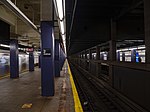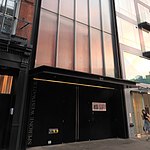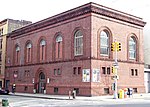National Theater (Manhattan)
The National Theater was a Yiddish theatre at the southwest corner of Second Avenue (Chrystie) and Houston Street in the Yiddish Theater District in Manhattan, New York City, United States. When first built it was leased to Boris Thomashefsky and Julius Adler. Its grand opening as the Adler-Thomashefsky National Theatre was on September 24, 1912.The theatre was one of the many designed by architect Thomas W. Lamb, and seated 1,900 when it opened. It was built as one of a pair of theatres, with the Crown Theater, seating 963, on the upper level. Both theatres closed in 1941, re-opened in 1951 as a pair of cinemas (the National Theater and the Roosevelt Theater), and were demolished in 1959.
Excerpt from the Wikipedia article National Theater (Manhattan) (License: CC BY-SA 3.0, Authors).National Theater (Manhattan)
Chrystie Street / 2nd Avenue, New York Manhattan
Geographical coordinates (GPS) Address Nearby Places Show on map
Geographical coordinates (GPS)
| Latitude | Longitude |
|---|---|
| N 40.72345 ° | E -73.991416666667 ° |
Address
Avalon Chrystie Place
Chrystie Street / 2nd Avenue
10002 New York, Manhattan
New York, United States
Open on Google Maps






